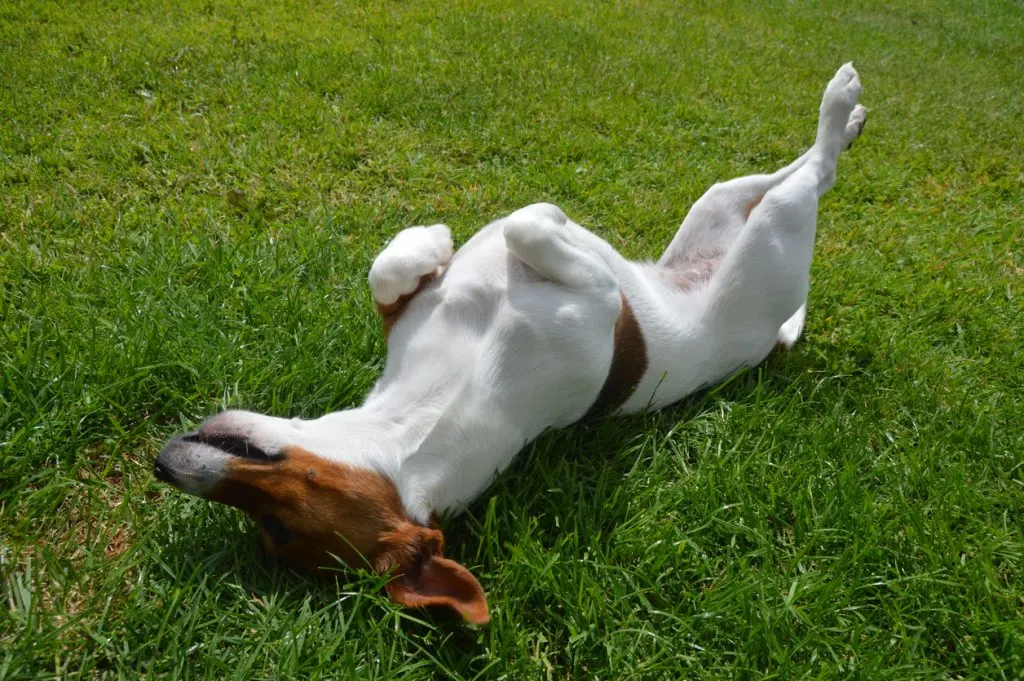You know the saying, “you can’t teach an old dog new tricks” but we disagree. With proper techniques, a bag full of treats and close relationship with your pup, you can teach any age dog a few new tricks, no matter whether their one of the smartest dog breeds or not. Working with your dog can reinforce trust with your canine companion and your pet/owner bond. Try some of these fun and easy tricks for your pet and show them off next time you’re at the dog park.
1. Roll over

2. Jump
Start by choosing a low obstacle like a small hurdle or a low bench. Show your dog a treat and encourage them to follow it over the obstacle. You can start by placing the treat on the opposite side of the obstacle at a low height so your dog can easily step over it. As your dog becomes comfortable stepping over the obstacle, gradually raise the height and encourage them to jump over it instead of stepping. Reinforce the action by saying things like “jump” or “over” as they approach the obstacle to associate the action with the command.

3. Balance Treat
Have your dog to sit calmly in front of you. Show them a treat and then place it gently on their nose, using a command like “balance” or “wait.” Initially, hold the treat in place with your fingers to help them understand what you want. Gradually increase the duration they hold the treat by rewarding them with verbal praise and a small piece of the treat from your hand. Once they can hold the treat for a few seconds, gradually introduce the cue word “balance” or “wait” just before placing the treat on their nose.

4. High five
Getting your dog to high five is a super fun trick to have in the bag. Have your dog site, hold a treat in your hand and place it in front of your dog’s paw. When your dog reaches out to paw at the treat, gently lift their paw with your hand and say a cue word like “high five” or “shake.” Reward with a treat to reinforce the trick.

5. Shake

6. Agility

7. Spin
Getting your dog to spin is an adorable and playful trick. To start always begin with a treat and hold it close to their nose. Slowly move it in a circular motion, just out of reach so they have to follow it with their nose. As they follow the treat in a circle, their body will naturally turn with it. Once they complete the circle, say “spin” or “twirl” and immediately reward them with the treat and praise.

8. Speak
Start by finding a trigger that reliably makes your dog bark, such as ringing the doorbell or knocking on a door. As soon as your dog barks in response to the trigger, immediately say your chosen command, like “speak” or “bark,” and reward them with a treat and praise.

9. Bow

10. Sit
Teaching your puppy to sit is one of the first commands we teach young dogs. Start by holding a small treat in your hand to get your puppy’s attention. Hold the treat close to their nose and slowly move it upwards and slightly back, which will naturally cause their bottom to lower to the ground as they follow the treat. As soon as their bottom touches the ground, say “sit” clearly and immediately reward them with the treat and praise.

11. Down

12. Stay
Another core basic trick is the “stay” command. Start by asking your dog to sit or lie down. Once they are in position, use a command like “stay” while showing your palm towards them like a stop sign. Initially, stay close to your dog and reward them immediately with treats and praise for staying still and gradually go farther away from them as they learn to follow the command more closely.

13. Play Dead
Start this trick with your dog in a lying down position. Hold a treat near their nose and slowly move it towards their shoulder, encouraging them to roll onto their side. As they roll onto their side immediately say something like “play dead” or “bang!” Give them a treat right away alongside praise.

14. Jump
To teach your dog to jump, start with a low obstacle like a small hurdle or a sturdy box. Hold a treat in your hand and show it to your dog to get their attention. Encourage them to come up to the obstacle by placing the treat on the other side at a low height, so they can easily step over it. As they get comfortable stepping over, gradually raise the height and encourage them to jump over instead of stepping.

